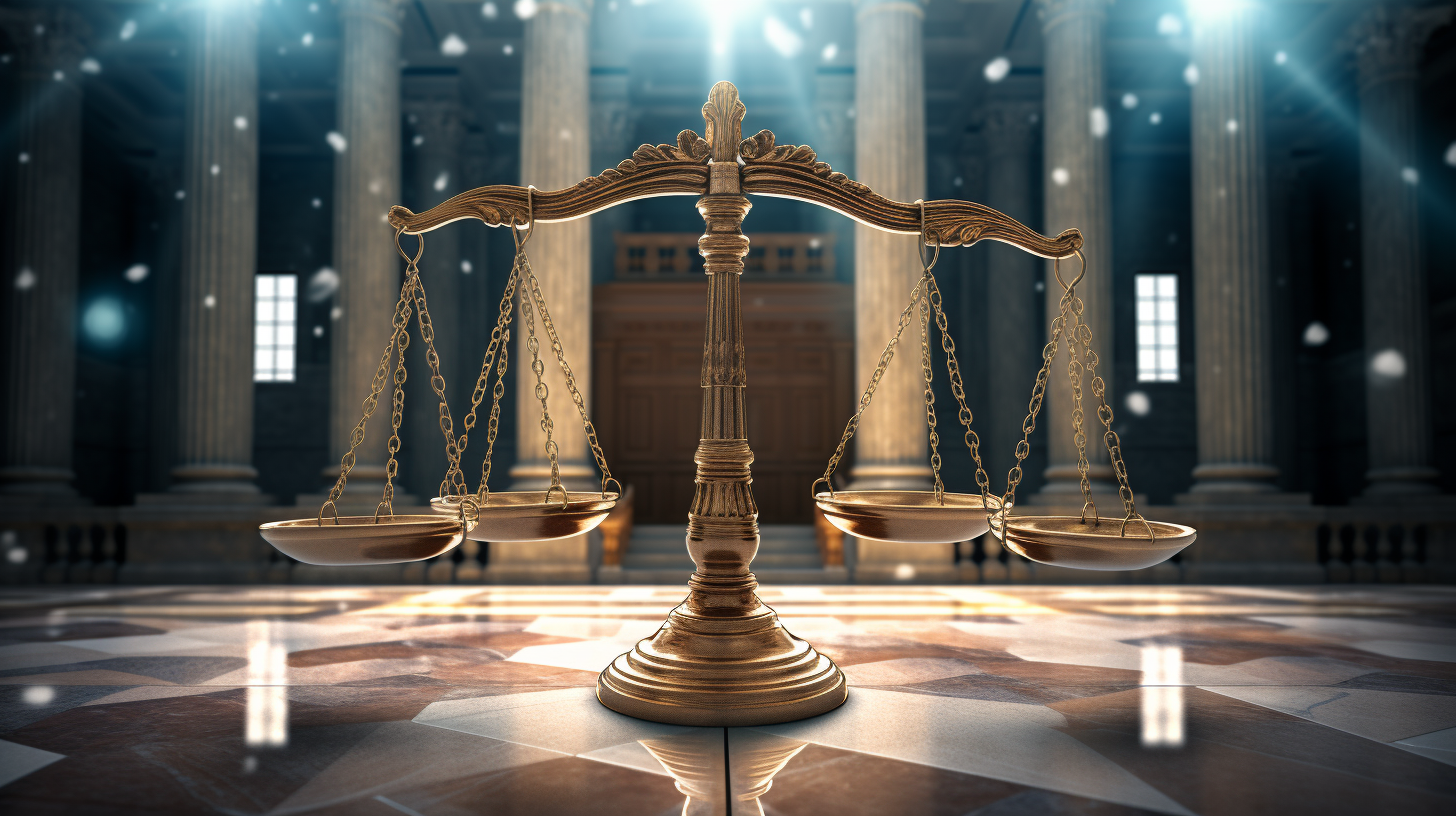The pursuit of justice is an ever-evolving quest, mirroring the shifts in the societies it strives to serve. Today, we find ourselves at the precipice of a redefined judicial landscape, remolded by the unyielding force of blockchain technology. In this article, we delve deep into the nuances of Blockchain Justice, a novel protocol of fairness and integrity at the heart of our digital society. Two crucial predecessors to this dialogue were our analyses of AI Arbiters in Action and Decentralized Justice, which laid the foundation for what we explore today.
Imagine a world where the labyrinthine corridors and dusty law tomes are replaced by the crystalline clarity of blockchain ledgers. Here, JusticeAI stands as a vanguard, a system where the neutrality of the machine melds with legal expertise to dispense justice. The City of Satoshi was our case study, illustrating a vibrant picture of efficiency, with a staggering 60% reduction in case backlog, thanks to the introduction of these AI arbiters.
But what does the term Blockchain Justice imply? It’s a paradigm wherein all legal proceedings, contractual obligations, and dispute resolutions are codified onto a public ledger, free from the taint of bias and corruption. Each case handled is a nexus of fact, untampered and visible to all, fostering an unprecedented level of transparency within the digital courts.
In this brave new world, smart contracts are the workhorses of legal agreements. Simple in concept yet ingenious in function, these autonomous and self-executing contracts encode terms directly into the code itself. Upon the fulfillment of conditions by the involved parties, the contract automatically executes the agreed-upon actions. It’s trust, ensured by the impartiality of algorithms and the indelible nature of the blockchain. What’s more seductive to the legal palate than a consensus of certainty?
Of course, challenges loom large on the horizon. Our foray into the Decentralized Justice system highlighted concerns surrounding data privacy and the deep-seated human apprehension toward algorithmic finality. There’s a pressing need to mitigate the culture shock as we transition from corporeal courtrooms to digital deliberations.
And yet, through these trials emerges a globally consistent legal experience. Where previously jurisdictional discrepancies might skew the scales, now stands a unified standard of legal craftsmanship. Blockchain Justice doesn’t discriminate by geography; it renders verdicts in the global language of encoded truth.
Let’s not overlook the nuance, though. The human element cannot be wholly excised from the justice equation. Sentience brings with it the shadow of subjectivity, and so the role of human oversight remains a pillar of the system. Appeals and interpretations still benefit from the human touch, marrying the binary coldness of code with the warmth of compassion. Reflecting on the gradual embrace of AI arbiters within this framework, one begins to appreciate the delicate tango between man and machine—a dance of balance, with fairness as the prize.
Looking ahead, Blockchain Justice can act as a beacon for nations grappling with judicial inefficiency and corruption. In an economy where the likes of Bitcoin and Ethereum are not just currencies but also the bedrock of contractual obligations, blockchain becomes more than a technology; it morphs into the very sinew of societal function.
As we usher in this era of immutable truth and automated fidelity, we are bound to encounter myriad challenges, both technical and philosophical. Yet, that is the very essence of progress—moving forward, guided by the beacon of innovation, and tempered by the lessons of hindsight. The journey of Blockchain Justice is far from over. Its story, interwoven with the destiny of our crypto-focused civilization, is only just beginning to unfold.
